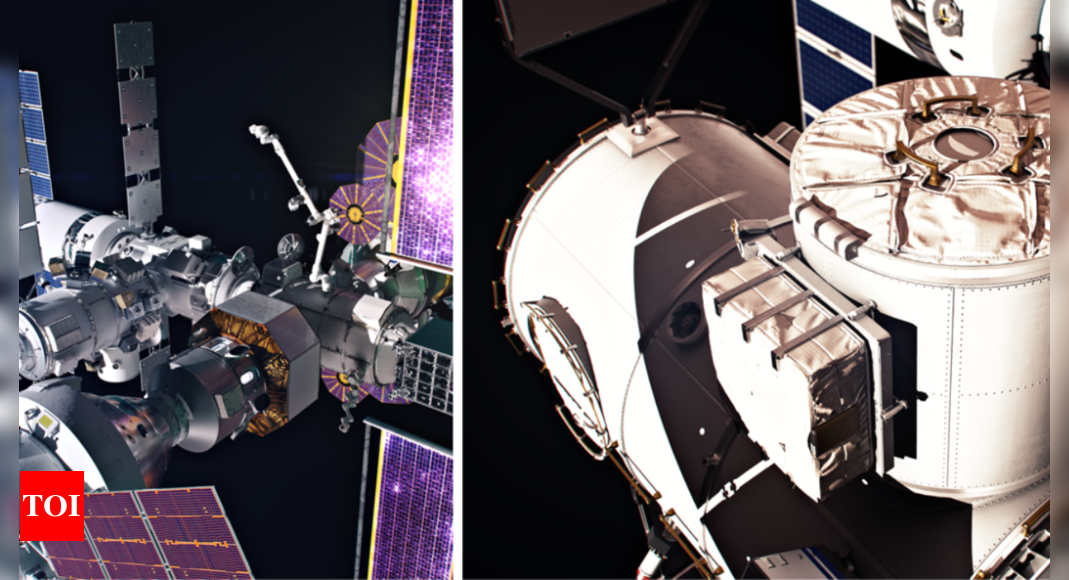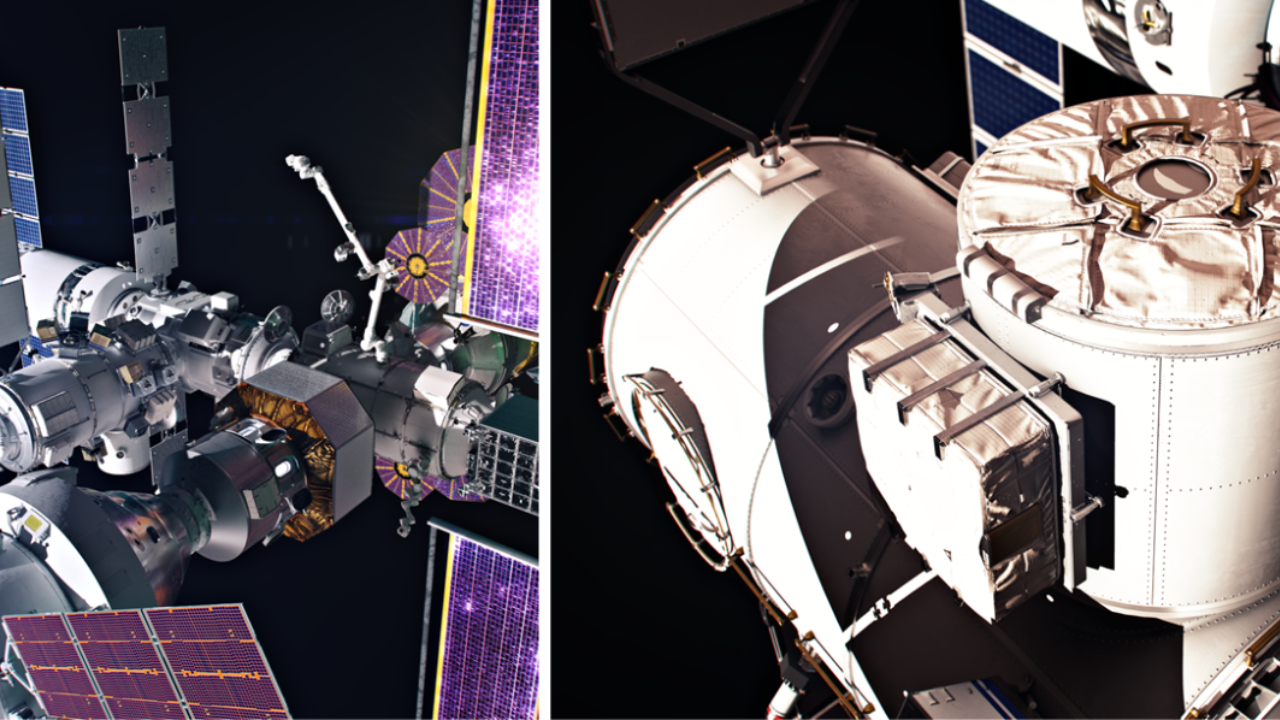[ad_1]
NEW DELHI: Nasa has joined forces with the United Arab Emirates (UAE) for a lunar project that will result in the creation of the world’s first space station orbiting the moon. The collaboration was announced on Sunday, solidifying the partnership between Nasa and the Mohammed bin Rashid Space Centre (MBRSC) of the UAE.
The lunar space station, known as Gateway, will play a pivotal role in Nasa’s long-term exploration of the moon under the Artemis program. The MBRSC will be providing an airlock module for Gateway, facilitating crew and scientific research transfers, according to the official statement.
US vice president Kamala Harris, who chairs the National Space Council, expressed enthusiasm for the international collaboration. “By combining our resources, scientific capacity, and technical skill, the US and UAE will further our collective vision for space,” Harris said on the collaboration.
Under the expanded collaboration, MBRSC will not only supply the Crew and Science Airlock module for Gateway but also contribute engineering support for the life of the lunar space station. Additionally, the UAE plans to send one of its astronauts on a future Artemis mission.
Highlighting the significance of the UAE’s contribution to Gateway, Nasa Administrator Bill Nelson said, “The UAE’s provision of the airlock to Gateway will allow astronauts to conduct groundbreaking science in deep space and prepare to one day send humanity to Mars,” Nelson explained.
The airlock, provided by MBRSC, will serve as a vital connection point, enabling the transfer of crew and scientific research between the habitable environment of Gateway’s pressurized crew modules and the vacuum of space. This capability will support broader scientific endeavors in the deep space environment and facilitate maintenance activities on Gateway.
Gateway’s role extends beyond supporting lunar exploration missions. The space station will serve as a hub for sustained exploration and research in deep space, offering a living and working space for astronauts. It will also act as a staging point for lunar surface missions and provide opportunities for spacewalks while orbiting the Moon.
The collaboration between Nasa and the UAE on Gateway builds upon their previous cooperation in human spaceflight. In 2019, Hazzaa Almansoori became the first Emirati to fly to space on a mission to the International Space Station, collaborating with Nasa on experiments and educational outreach. Sultan Al Neyadi, another Emirati astronaut, joined Nasa’s SpaceX Crew-6 mission in 2023, contributing to scientific research in the floating laboratory.
The lunar space station, known as Gateway, will play a pivotal role in Nasa’s long-term exploration of the moon under the Artemis program. The MBRSC will be providing an airlock module for Gateway, facilitating crew and scientific research transfers, according to the official statement.
US vice president Kamala Harris, who chairs the National Space Council, expressed enthusiasm for the international collaboration. “By combining our resources, scientific capacity, and technical skill, the US and UAE will further our collective vision for space,” Harris said on the collaboration.
Under the expanded collaboration, MBRSC will not only supply the Crew and Science Airlock module for Gateway but also contribute engineering support for the life of the lunar space station. Additionally, the UAE plans to send one of its astronauts on a future Artemis mission.
Highlighting the significance of the UAE’s contribution to Gateway, Nasa Administrator Bill Nelson said, “The UAE’s provision of the airlock to Gateway will allow astronauts to conduct groundbreaking science in deep space and prepare to one day send humanity to Mars,” Nelson explained.
The airlock, provided by MBRSC, will serve as a vital connection point, enabling the transfer of crew and scientific research between the habitable environment of Gateway’s pressurized crew modules and the vacuum of space. This capability will support broader scientific endeavors in the deep space environment and facilitate maintenance activities on Gateway.
Gateway’s role extends beyond supporting lunar exploration missions. The space station will serve as a hub for sustained exploration and research in deep space, offering a living and working space for astronauts. It will also act as a staging point for lunar surface missions and provide opportunities for spacewalks while orbiting the Moon.
The collaboration between Nasa and the UAE on Gateway builds upon their previous cooperation in human spaceflight. In 2019, Hazzaa Almansoori became the first Emirati to fly to space on a mission to the International Space Station, collaborating with Nasa on experiments and educational outreach. Sultan Al Neyadi, another Emirati astronaut, joined Nasa’s SpaceX Crew-6 mission in 2023, contributing to scientific research in the floating laboratory.
[ad_2]
Source link


